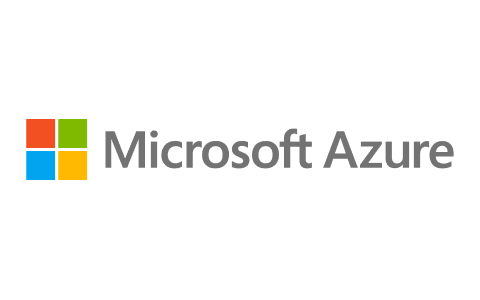Earn a certificate & get recognized
Virtual Cloud Computing
Enrol now for this free Virtual Cloud Computing course and enhance your knowledge in this in-demand domain. Learn about Virtualizations, important virtualization terminologies and more from our experts. Start today!
Instructor:
Mr. Anirudh RaoAbout this course
In this course, we'll cover the need for cloud computing, introduce you to its fundamentals, explain how it works, and focus on the vital role of virtualization. Cloud computing is essential for businesses seeking flexible and scalable IT resources which can be accessed over the Internet. We'll explore cloud models and services, including public, private, and hybrid clouds. You'll gain a solid understanding of cloud computing concepts, followed by an in-depth look at virtualization, a key technology behind cloud infrastructure. We'll explain important virtualization terms such as a hypervisor, virtual machines (VMs), and containers.
The course will highlight the characteristics and benefits of virtualization. You'll learn how it optimizes resource utilization, enhances flexibility, and enables efficient IT infrastructure management. We'll discuss cost savings, disaster recovery, and business continuity. By the end, you'll have a strong foundation in virtual cloud computing, comprehending its significance in the digital landscape and its potential business advantages.
Course outline
Need for Cloud Computing
This module focuses on several reasons that define the need for cloud computing. You will learn why organizations of all types require the implementation of cloud computing. Finally, you will go through a simple real-life scenario for cloud computing applications on IoT devices.
Introduction to Cloud Computing
This module starts with helping you understand what Cloud Computing is and go through various cloud models like public, private, and hybrid clouds.
How does Cloud Computing Work?
In this module, you will understand the two main divisions of cloud computing, frontend and backend, that contributes to the working model of cloud computation. The tutor will brief you about the frontend and backend in detail to help you understand how these work together as a single unit with the help of middleware. Next, the tutor will talk about middleware and its importance in cloud computing. Later, you will be familiarized with the redundancy of data in cloud computation. Lastly, you will learn the reasons behind data redundancy in cloud computing.
Virtualization in Cloud Computing
This section discusses what virtualization in cloud computing is and goes on to explain the entity concept and its working.
Important Virtualization Terminologies
This section defines and explains the important terminologies in cloud computing.
Characteristics and Benefits of Virtualization
This section discusses the various features of cloud computing like Security, Availability, Isolation, Aggregation, No System Failure Risk, Cost saving, and Flexibility and also discusses advantages offered by cloud computing.
Get access to the complete curriculum once you enroll in the course
What our learners enjoyed the most
Skill & tools
61% of learners found all the desired skills & tools
Our course instructor

Mr. Anirudh Rao
Cloud Computing Expert
Frequently Asked Questions
Will I receive a certificate upon completing this free course?
Is this course free?
What are the prerequisites to learning this Virtual Cloud Computing course?
This is a beginner-level course. You do not need to have any prior knowledge to learn this course since it takes you through all the basics you need to know.
How long does it take to complete this free Virtual Cloud Computing course?
Although this Virtual Cloud Computing is an hour-long course, you can learn it at your leisure since it is self-paced.
Will I have lifetime access to this free Virtual Cloud Computing online course?
Yes. Once you enroll in this free Virtual Cloud Computing online course, you will have lifetime access to it.
What are my next learning options after this Virtual Cloud Computing course?
After you have completed this course, you can either learn other concepts in cloud computing individually, or you can register for the PG in Cloud Computing and master them all under a single roof.
Why is it essential to learn Virtual Cloud Computing?
Due to the requirement for communication between the various infrastructure components, networking is a crucial component of any infrastructure arrangement. This is also true for cloud infrastructures. Making a virtual platform out of the server operating system and storage hardware is known as virtualization in cloud computing. The user will benefit from having access to multiple machines at once, and sharing a single physical instance of a resource or program across numerous users is also made possible.
Why is Virtual Cloud Computing so popular?
While generating considerable cost savings, virtualization can boost IT agility, flexibility, and scalability. Benefits of virtualization include higher workload mobility, improved resource performance and availability, automated processes, and easier management and lower ownership and operating costs for IT. The main advantages of virtual cloud computing include cost savings, security, flexibility, mobility, insight, increased collaboration, quality control, and disaster recovery.
What jobs demand that you learn Virtual Cloud Computing?
It is very essential for every professional in the machine learning and artificial intelligence industry to have proficiency in working with computer vision. The very popular careers for the subject include:
- Deep Learning and Computer Vision Engineer
- Image Processing Engineer
- Computer Vision Optimization Engineer
- Research Scientist - Computer Vision
- AI Engineer - Computer Vision
After completing this Virtual Cloud Computing course, will I get a certificate?
Yes. The course includes different modules for different topics in computer vision essential to work with AI tasks, such as digitizing images, sampling the data, quantizing, classification, identification, detection, padding, pooling, filtering and transfer learning. After you have a good understanding of working with the subject, you will have to take a test for your self-analysis, after which you will be awarded a certificate of completion for the subject.
What knowledge and skills will I gain upon completing this Virtual Cloud Computing course?
You will be able to understand the importance of shifting to virtualization to work with data within the organization. You will also understand the features it offers and be able to work full-fledgedly to secure and access the data ethically.
How much does this Virtual Cloud Computing course cost?
Virtual Cloud Computing is a free course. You can enroll in the course and start learning it online, and you can also refer to the attached materials anytime for additional knowledge.
Is there a limit on how many times I can take this Virtual Cloud Computing course?
There are no numerical restrictions on how many times you can take this course. You can enroll in the course today and come back in your leisure to learn it for free online.
Can I sign up for multiple courses from Great Learning Academy at the same time?
Yes. You can enroll in multiple courses simultaneously. But you would not be able to dedicate yourself to mastering all those subjects at once. Great Learning Academy offers courses for free; you can enroll in a course and complete it before you go to the next.
Why choose Great Learning Academy for this Virtual Cloud Computing course?
Data science, machine learning, artificial intelligence, product management, digital marketing, and big data engineering are among the subjects covered in the full-time and short-term programs offered by Great Learning, a top provider of ed-tech services. Some justifications for choosing Great Learning include:
- One of the few businesses, Great Learning, provides full-time, online, and offline training across a variety of fields.
- You can get support for your learning journey from the experienced mentors on the Great Learning team who are specialists in their industry.
- The programs offered by Great Learning are created with consideration for the demands of the industry and are frequently updated to reflect the most recent developments.
Who is eligible to take this Virtual Cloud Computing course?
Individuals interested in learning cloud computing and professionals looking forward to securing tasks that deal with data for their organization can take up this course.
What are the steps to enroll in the Virtual Cloud Computing course?
Enrolling in the Virtual Cloud Computing course is a 2-step process. You first need to pick the course you are interested in learning, enter your E-mail ID and set a password. You can then dive into the modules and start learning it for free online.

 4.49
4.49

















.jpg)



.png)





.png)
.png)

.png)

.png)
.png)





.png)
.jpg)





.png)




.jpg)
.jpg)
.jpeg)


.png)

.jpg)


.jpg)
.png)

 (1).png)
.png)
.png)





.jpg)
.png)
.png)
.png)
 (1).jpg)

.png)
.png)






.jpg)












